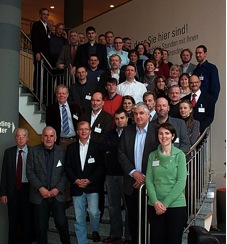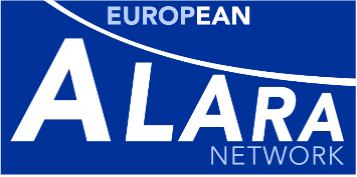The 3rd EANNORM workshop was held from 23 - 25 November 2010 in Dresden, Germany. It was organised and hosted by IAF - Radioökologie GmbH and supported by the Federal Office for Radiation Protection Germany. This workshop was dedicated to the topic Scenarios for Dose Assessments in the NORM industry". Its main goal was to familiarise the participants with different approaches developed for dose calculations in the NORM industry and to discuss the question as to whether a harmonization of these approaches should be pursued or not. Forty five experts, coming from 14 countries, took part in the discussions and shared their experiences.
Each speaker was allocated 45 minutes which included ample time for discussion. Each daily session was followed by a special round table discussion of about one hour on "burning questions". The talks reflected a wide range of situations in which the presence of NORM can cause radiation exposures to workers and/or to members of the public at a level which cannot be ignored from the radiation protection point of view. The scientific program and the single presentations of the EANNORM Round Table Workshop on Scenarios for Dose Assessments in the NORM industry" are available at the EANNORM web-page www.ean-norm.net.

The main conclusions of the EANNORM Round Table Workshop on Scenarios for Dose Assessments in the NORM industry" were:
- We are still some way from a harmonisation of methods suited for dose assessment in the NORM industry.
- We need European guidelines for the measurements of key parameters for dose assessment and calculation of the dose for workers and, if necessary, for members of the public, too.
- The Calculation Bases for the Determination of Radiation Exposure due to Mining-caused Environmental Radioactivity (Calculation Bases Mining) published by the Federal Office for Radiation Protection (Germany) could be a basis for such a guideline.
- Measurements of the ambient gamma dose rate are one of the principal components of the monitoring programmes for workers in the NORM industry. Therefore, measurements have to be justified, since they are not applicable for a wide range of NORM.
- Radon that is released from raw materials processed in the NORM industry or from industrial residues can dominate the total exposure of persons at work. A method should be developed in order to assess the contribution of radon released from the materials of concern to the indoor concentration. The method should also be suitable to assess the release of radon from the building materials to the indoor concentration in dwellings.
- The specific activity of NORM is the basis for several assessments and therefore a key parameter in the radiation protection practice. How should it be measured efficiently and reliably, taking into account the variety of materials?
- Some of the most commonly discussed topics within the network include cross border material handling and transport of NORM in the context of different national positions. However it was agreed that the problem can only be solved in a political framework and the EC should come to a commonly accepted solution as soon as possible.
- The present state and the future of the EANNORM was the subject of a lively discussion. In particular, the participants recognised the advantages of having a well-working network with members coming from all European states as well as from abroad. The website currently gets about 1000 daily visits from members and non members of the EAN-NORM. However the fate of the network depends on the future financing.
